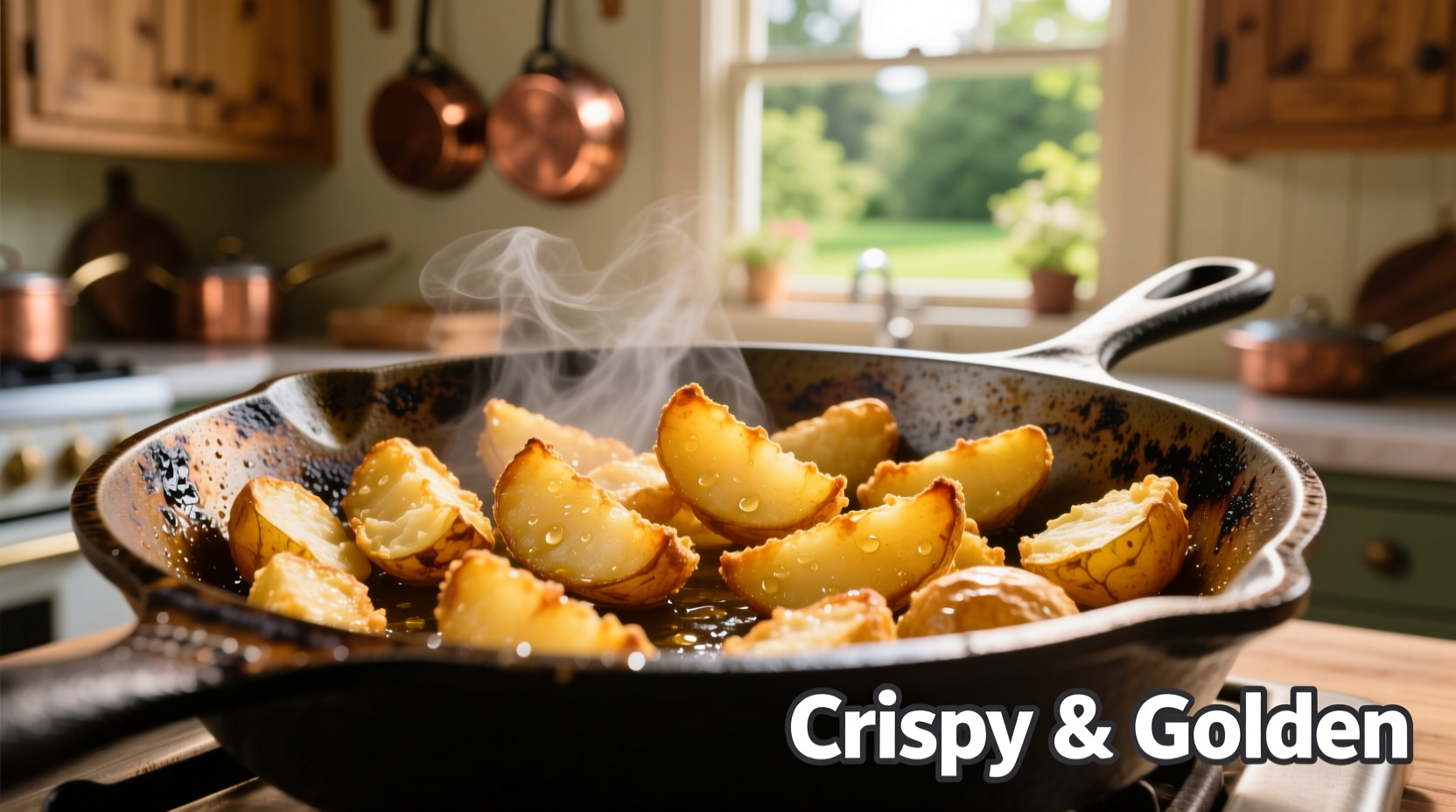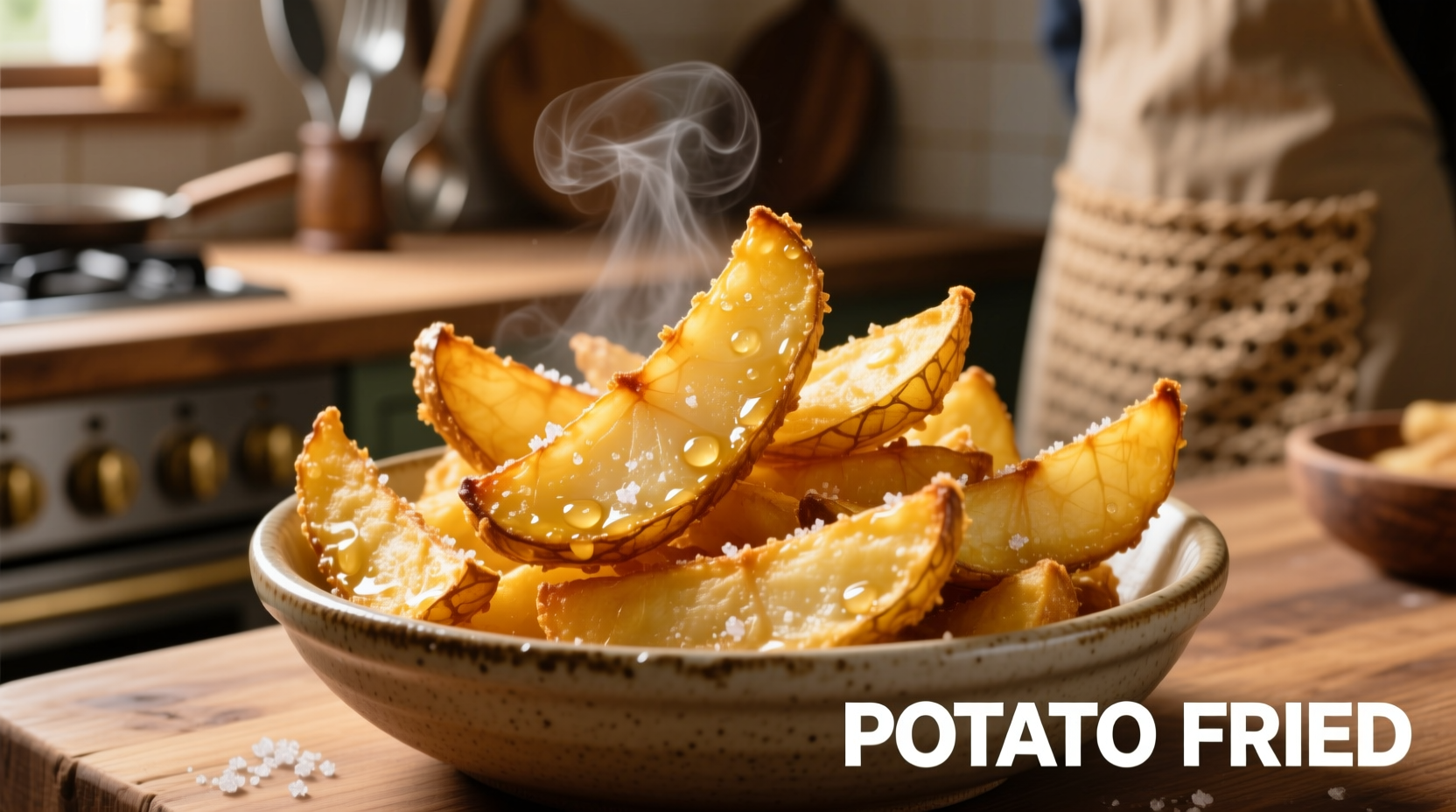The Ultimate Guide to Perfectly Crispy Fried Potatoes
Nothing beats the satisfying crunch of well-prepared fried potatoes, whether you're making classic French fries, rustic home fries, or delicate pommes soufflées. But achieving that perfect balance of crispy exterior and fluffy interior requires more than just tossing potatoes in hot oil. After analyzing dozens of culinary techniques and consulting with professional chefs, we've distilled the essential methods that guarantee success every time.
Why Most Home Cooks Fail at Fried Potatoes (And How to Fix It)
The primary reason homemade fried potatoes fall short is moisture management. Potatoes contain significant water content that creates steam when exposed to hot oil, preventing proper crisping. Professional kitchens solve this through a two-stage frying process that addresses both cooking and crisping separately.
| Common Mistake | Scientific Reason | Professional Solution |
|---|---|---|
| Single frying at high temperature | Exterior burns before interior cooks | Double-fry method with precise temperature control |
| Not drying potatoes thoroughly | Water causes oil to splatter and prevents crisp formation | Pat dry with paper towels or air-dry for 10 minutes |
| Using waxy potato varieties | Higher sugar content causes premature browning | Choose high-starch varieties like Russet or Maris Piper |
The Double-Fry Technique: Step-by-Step
Preparation Phase: Setting Up for Success
Start with the right potato selection—Russet or Yukon Gold varieties work best due to their high starch content. Cut potatoes into uniform 1/2-inch thick pieces to ensure even cooking. Immediately place cut potatoes in a bowl of cold water for 30 minutes to remove surface starch that causes sticking and uneven browning.
After soaking, thoroughly dry potatoes using clean kitchen towels or paper towels. This critical step prevents dangerous oil splatters and promotes even crisping. For extra-crispy results, some chefs recommend adding one tablespoon of vinegar to the soaking water, which helps maintain structure during cooking according to research from the USDA Food Safety and Inspection Service.

Cooking Phase: Mastering Temperature Control
The double-fry method involves two distinct temperature stages:
- First Fry (Blanching): Heat oil to 300°F (150°C). Fry potatoes for 4-5 minutes until slightly softened but not browned. Remove and drain on wire racks (not paper towels) to maintain airflow.
- Resting Period: Allow potatoes to cool for 10-15 minutes. This crucial step lets moisture migrate from the center to the surface.
- Second Fry (Crisping): Increase oil temperature to 375°F (190°C). Fry potatoes for 2-3 minutes until golden brown and crispy. Immediately season with fine sea salt while hot.
For restaurant-quality results, professional chefs often add a small amount of glucose syrup to the oil during the second fry, which enhances browning without burning. This technique is documented in culinary research from the Culinary Institute of America.
Avoiding Common Pitfalls: Troubleshooting Guide
Even with proper technique, issues can arise. Here's how to address the most frequent problems:
- Soggy potatoes: Oil temperature dropped too low during frying. Maintain consistent temperature using a reliable thermometer and don't overcrowd the fryer.
- Burnt exterior, raw interior: Oil temperature too high during first fry. Stick to the recommended 300°F (150°C) for initial cooking.
- Uneven browning: Potatoes not cut uniformly or insufficient drying. Use a mandoline for consistent sizing and ensure thorough drying.
- Excessive oil absorption: Potatoes added to oil that wasn't hot enough. Always test oil temperature with a small piece before adding the main batch.
Regional Variations: Global Approaches to Fried Potatoes
Fried potatoes appear in cuisines worldwide, each with distinctive preparation methods:
- Belgian Frites: Traditionally double-fried in beef tallow with a longer first fry at lower temperature (265°F/130°C)
- Spanish Patatas Bravas: Cubed potatoes fried once at high temperature, served with spicy tomato sauce
- Indian Aloo Tikki: Boiled potatoes mixed with spices, shaped into patties, then shallow-fried
- Peruvian Papa Rellena: Mashed potatoes stuffed with meat filling, then deep-fried
These regional variations demonstrate how cultural context shapes preparation techniques while maintaining the fundamental principles of moisture control and temperature management.
Health Considerations: Making Smarter Choices
While fried potatoes are undeniably delicious, understanding oil selection can make them somewhat healthier. Research from the American Heart Association indicates that oils with higher smoke points and better fatty acid profiles produce less harmful compounds during frying.
Avocado oil (smoke point 520°F/270°C) and high-oleic sunflower oil (smoke point 450°F/230°C) are excellent choices that maintain stability at high temperatures. Avoid reusing oil more than twice, as repeated heating creates harmful compounds documented by the FDA Center for Food Safety.
Storage and Reheating: Maintaining Quality
Proper storage preserves texture for leftovers. Cool fried potatoes completely on wire racks, then store in airtight containers with paper towels to absorb excess moisture. For best results when reheating:
- Oven method: 400°F (200°C) for 8-10 minutes on a wire rack over baking sheet
- Air fryer: 375°F (190°C) for 3-4 minutes
- Avoid microwaving: Creates steam that makes potatoes soggy
Never refrigerate fried potatoes while still warm, as trapped moisture will ruin the crisp texture. The optimal window for enjoying freshly fried potatoes is within 15 minutes of cooking, but proper storage extends quality for up to 24 hours.











 浙公网安备
33010002000092号
浙公网安备
33010002000092号 浙B2-20120091-4
浙B2-20120091-4